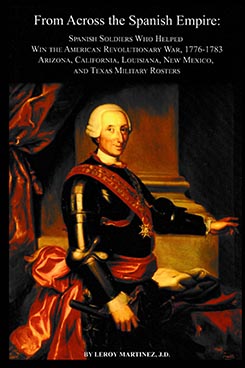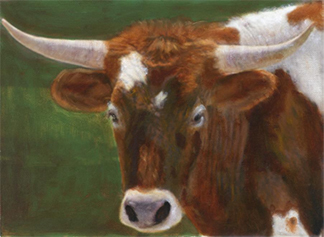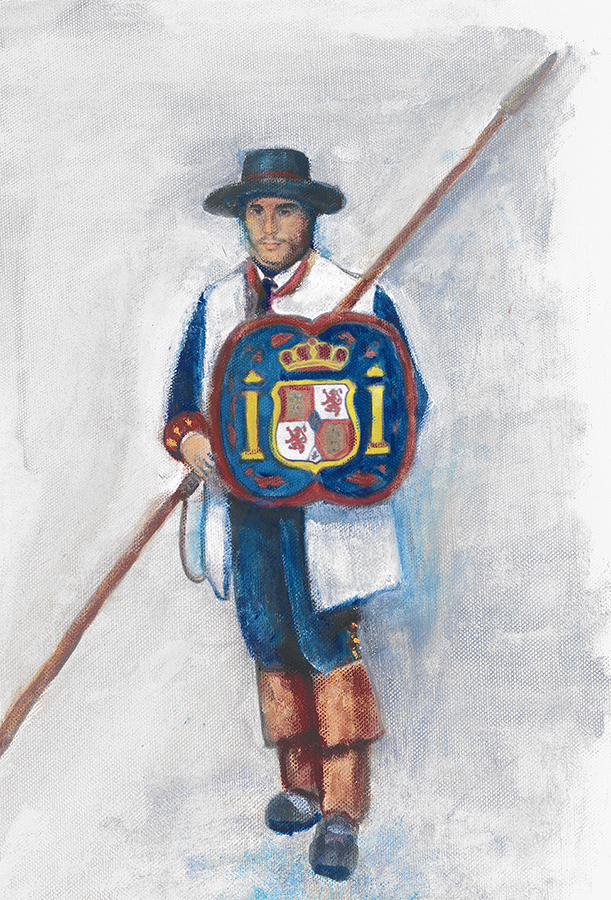|

To order online: www.genealogical.com
lSBN: 978-0-8053-5784-3
Format: Paper
Size: 6” x 9”
Pages: xii + 269 pp.
Item #: CF8350
Published: 2015
Price: $29.95
Although it is frequently overlooked, the Spanish Empire, under King Carlos III, provided significant aid and support for America's struggle for independence from Great Britain. For example, after Spain declared war on Great Britain in June 1779 (in conjunction with its familial alliance with France), the Spanish governor of Louisiana, Bernardo de Galvez, commenced the military campaigns against the British that ultimately resulted in their ouster from the Mississippi Valley and West Florida. In another instance, when the French fleet under the Comte de Grasse was not able to pay its sailors and soldiers, Spain provided de Grasse with the needed funds, thus enabling the siege at Yorktown against Cornwallis.
This book by Leroy Martinez is the first work to identify the Spanish combatants serving in North America during the American Revolution. The volume begins with a listing of Spanish governors, Spanish presidios (forts) in the future United States, a glossary of Spanish terms that appear in the records, and a chronology of events--all for the years of the Revolution. Here readers will learn that Spain's involvement in our War for Independence preceded that nation's declaration of war against Britain in 1779. For instance, Spain, through the agency of merchant Diego de Gardoqui in Bilbao, sent money, muskets, munitions, medicine, and military supplies to the U,S. as early as 1776. Gardoqui later became Spain's first ambassador to America.
At the heart of Mr. Martinez' groundbreaking book, of course, are the lists of Spanish soldiers of this era. Separate chapters list those who served in Arizona, California, Louisiana, New Mexico, and Texas. In most cases Mr. Martinez identifies each soldier by name, military unit, rank and date, and the source, as well as sometimes by age, place of origin in Europe, theater served in, and other factors. The author extracted his lists of servicemen from original sources found in the Archives of Spanish Naval Museum in Madrid, the U.S. Library of Congress, and in state archives in Texas, Arizona, and California. He has also included a number of illustrations of military uniforms, original documents, and other artifacts from the era--including the records of his own ancestors. In all, From Across the Spanish Empire sheds light upon 7,500 Spanish combatant* who served in North America during the American Revolution, any one of whom could qualify a descendant for membership in the Sons of the American Revolution or related lineage organizations.
|
I am a history and genealogy addict. I have always enjoyed history and it was not until I reached my fifties that I started my genealogy. I will begin with saying something about myself, how I became interested in genealogy, how my experience in life led me to being a researcher, and the result of my research discoveries. Benjamin Franklin said in 1738, “If you would not be forgotten, as soon as you are dead and rotten; Either write things worthy of reading, or do things worthy of writing.”
I was born on February 10, 1945 and was raised in Los Angeles, California. One of my first memories was staring at a picture on the wall of a man unlike any I had seen before. This image stayed in my head for the rest of my life. The image was of George Washington. Our family was neither poor nor well- to- do. Neighbors knew each other and even helped if there was a need. “Leroy, could you water my lawn while we are gone?” one neighbor asked. “Yes” as if there was any other answer. Older ladies would ask me to help when there was special yard work to be done. My parents sent my younger sister and me to Catholic private schools. I was good at sports, especially gymnastics. I competed in gymnastics during my first two years of college. My major was Police Science. Then came a military draft notice and I was left with the decision of whether to stay in school or enter the military. The school Dean said I could go now or go later. I felt confident that I would make a better soldier than student at the time and serving my country was an unquestionable duty for me. February 1966 to February 1968 I served in the Army. Being in the military was one of the best events in my life. I matured without knowing exactly how it happened. Thereafter, I found things were easier for me like continuing my education, work experience as a Deputy Sheriff, and being a civic-minded person while raising a family. I even changed my major and graduated with a Bachelor’s degree in Public Administration. I was proud of my contribution to society the first fifteen years as a Deputy Sheriff. Afterwards I felt I needed more in my life. This is when I decided to fulfill my earlier dream to continue my education and attend Law School.

Criollo Catle
Another pivotal point in my life was to learn about my family history. Why did I wait so long? To this I have no good answer. When in my fifties I concentrated on my immediate family history. My paternal grand-parents died before my father had a chance to know them. Questions haunted me like why did I not know my paternal grand-parents name, what did they look like, where did they live, etc. I was an avid reader and could read and retain information relating to anything connected to my family heritage. I joined genealogy organizations and bought books related to records of persons who lived within my family area. I started collecting records starting with myself, such as, birth, baptism, and marriage documents. Trying to obtain many photos of family was challenging. I persisted and now have a great collection of historical family photos. Traveling to the many places in New Mexico was more interesting because of the history I had learned from my previous readings. An example was when I saw the old house first made of adobe brick in which my great-grandparents lived. This was the same house in which my father was raised as he was raised by his grand-parents in Espanola, New Mexico. Adjacent to the home in Espanola was a smaller adobe building that my great-grandfather used as a store, from 1880 to 1890, according to ledgers that still exist. Other documents revealed that my great-grandfather was one of three brothers and acquired eighty-eight acres of land from his mother. My father once said that he saw a letter signed by President Abraham Lincoln in the home. My research showed that from 1846 to 1862, the family land petition continued until Congress approved and President Abraham Lincoln signed the land ownership. Great grandfather Antonio Avon Martin was appointed as Sheriff during 1885. Finding documents as listed was a genealogist treasure.
|
Since 1598, our family name changed from Martin de Serrano, Martin, Martines, and Martinez. My grand-father Nicasio was the first person named Martinez. Discovering this name change was another interesting journey. My great-grandmother Placida Ortega’s brother was one of the signers of the first New Mexico State Constitution.
There is so much more regarding how interesting it became to enter the world of genealogy. However, I will advance to how my research experience led me toward writing the book From Across the Spanish Empire. I learned through my genealogy that I had ancestors who were part of the military in New Mexico since 1598. More specifically, I had ancestors who were part of the Santa Fe Presidio during 1776-1783 American Revolution which allowed me to be a member of the Sons of the American Revolution Society (SAR). Proof of one last document was a Spanish archive copy of my ancestor Juan Antonio Benevides as a soldier. I knew I would eventually help others become members of SAR and they would likely have a similar problem of proof, so I obtained Spanish archive copies of Santa Fe Presidio military rosters. The Spanish archive copies became useful when I helped new New Mexico applicants of SAR. Now I am being asked to help SAR applicants whose ancestors lived in California during the American Revolution.
.jpg)
Spanish Flag 1700
Fortunately many records were saved and are in the Bancroft Library associated with the University of California Berkeley. My new challenge was finding Spanish archival military documents of anyone serving within the boundary of the current United States, such as Arizona, Louisiana, and Texas. I needed to address their names, states, and any other pertinent information of these soldiers. Other military personnel listed came from regiments in Spain. I started separate books that included the Spanish documents with English translations per state. Now I thought that it would be good to share this information to the largest audience possible. I made contact with the Genealogical Publishing Company. All copies of Spanish documents with English translations will be sent to the National Library of the Sons of the American Revolution. One of my most exciting moments was when I saw my book in full print. I was ecstatic!
Leroy Martinez

Soldado de Cuera
|